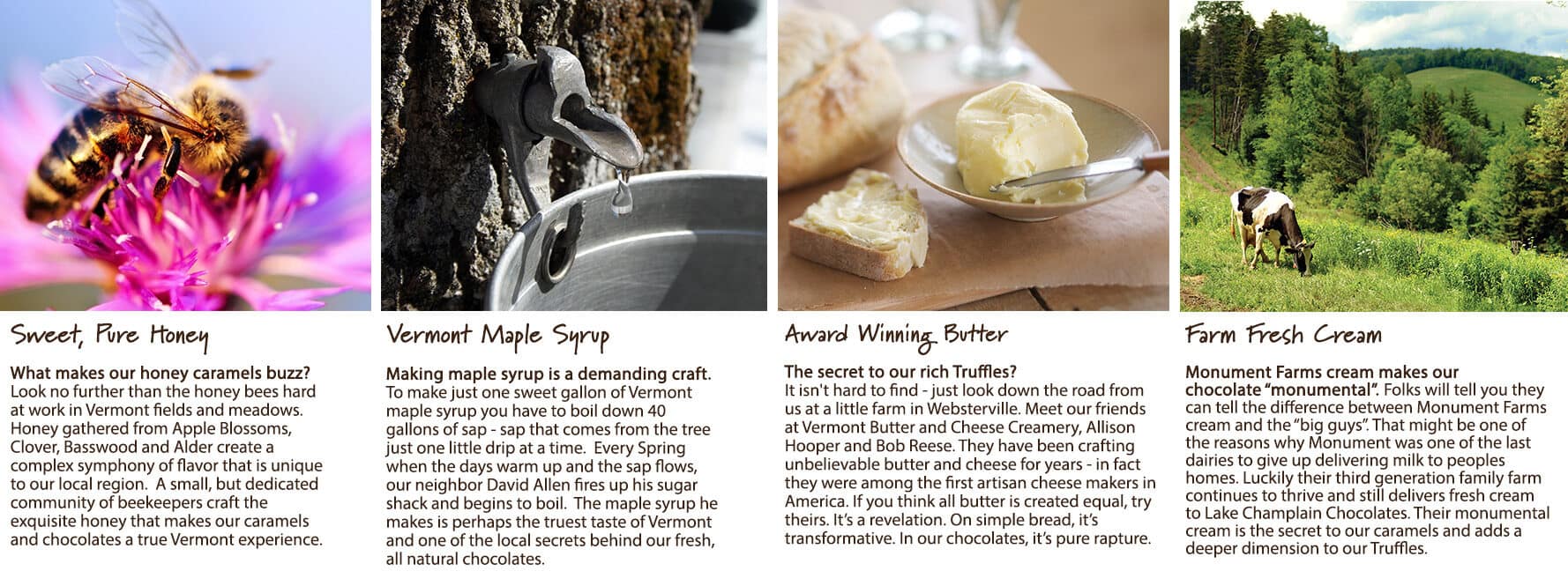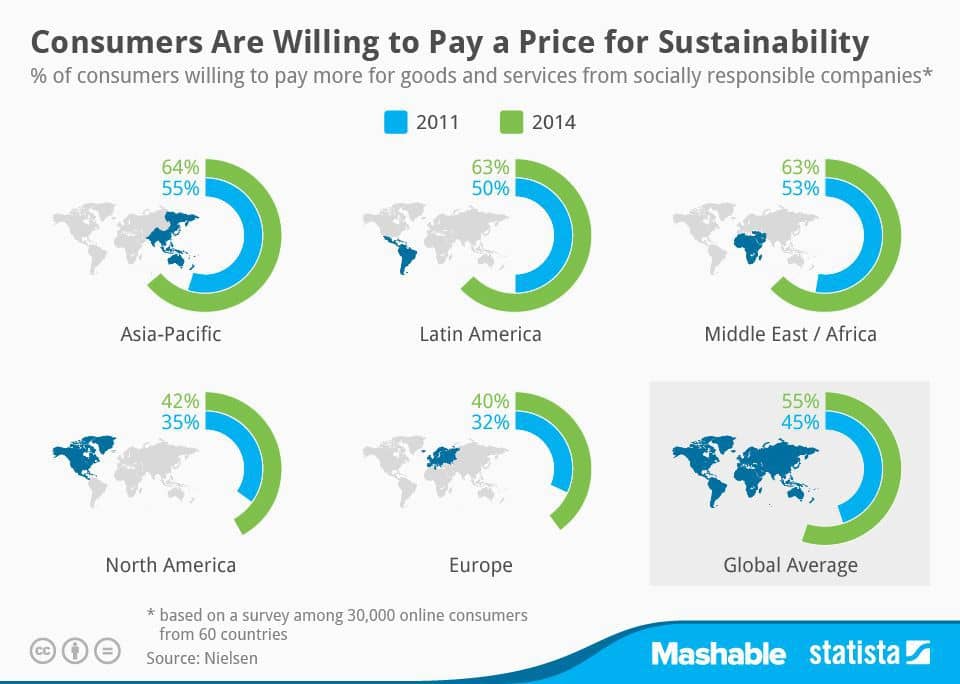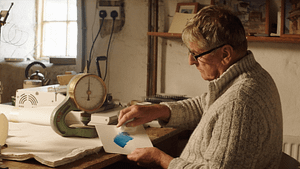Have you noticed there is a “gratitude economy” evolving?
More and more of us are making consumer choices based on the reputation that companies have for making the world a better place. And when we are proud to be part of something bigger than ourselves, our gratitude starts a feedback loop that’s pretty hard to beat. A more authentic kind of CSR — Corporate Social Responsibility — in companies may be what moves us all to a new level of economic progress!
Let’s meet some companies leading change and learn a quick way to grow this wave!

Everything from cosmetics to electronics to Halloween candy comes with a social cost that has been largely hidden, until now. Child labor, toxic waste, unlivable wages and depletion of natural resources are just a few of the outcomes when any industry drives single-mindedly for profits. But new trends in transparency and rewards for good behavior are enticing industries to step up and do the right thing!
More and more start-up businesses are founded on the principle of giving back, right from the outset. And big corporations are supporting projects that are earnestly tackling some of humanity’s most vexing problems. You may even be making decisions yourself about who to buy from these days based on who is trying to do good while doing good business. This sort of gratitude economy is a growing trend!
This new model of CSR has many businesses looking up from the grindstone and searching for places where their expertise could have a charitable impact.
Did you know that Lego Corporation has committed to making all products and packaging from sustainable materials by 2030? Or that the UPS Foundation is supporting a start-up company that is using drones to fly life-saving blood and vaccines to remote corners of Africa? And TOMs, well, they’re known for giving away shoes to those in need—but they are also involved in projects to help the visually-impaired, provide clean drinking water and build small businesses in developing countries. I could go on and on with examples.
Finally, we are starting to make improvements in society from a position of using our strengths, rather than changing only after we are weakened and on the verge of disaster. And that’s how a new kind of CSR is leading some wonderful leaps of progress.
There’s a wonderful feedback loop evolving in this “gratitude economy”. Brand loyalty is moving in a new direction that is self-perpetuating because people like to come together around ideas bigger than themselves!
To get us a little more familiar with the potential of this model, here’s a wonderful quick video about the CSR efforts of the famous Swedish-founded multinational group IKEA that designs and sells ready-to-assemble furniture and useful home goods. It’s a little reminder of what’s possible when industry leaders like IKEA realize doing good is good business:
Good to know! Admittedly, I’ll probably think of all those smiling faces the next time I need something that IKEA might sell.
This is a great example of one of the best trends in this wave of progress: some corporations are willing to take on problems that most of us don’t even know exist! It would be easy to champion issues that everyone knows about, and look like the hero of the day. But it takes courage to point to something many of us might not even realize needs attention and dive in.
Take Chocolate for Example…
I had no idea there was a connection between Halloween and child labor until I read a short but very thought-provoking blog posting by the renowned thought leader, Seth Godin. Turns out, we can all influence a pretty egregious problem by voting with our wallets in a few weeks when we purchase our Halloween candy!
Here’s Seth’s recent blog posting. He was kind enough to let me repost it in its entirety:
Don’t buy cheap chocolate
Halloween is a month away. And over the next few weeks, a lot of cheap chocolate is going to get bought in preparation for the ringing doorbell.
Cheap chocolate is made from beans picked by poor kids in dangerous conditions.
And cheap chocolate is made from beans that don’t even taste that good, but come from more hardy trees, so it’s more reliable to grow.
Some of the poorest people in the world raise cacao beans, and the market is driven by the low bidders. The low bidders are the folks who have no room for flexibility in their supply chain because the end product they sell is so price sensitive. For forty years, it’s been a race to the bottom, one that has led to plenty of ignored pain.
On the other hand, expensive chocolate turns the ratchet in the other direction. The folks who make the bars, particularly those who do direct trade, keep paying higher and higher wages. They keep children out of the system. And they encourage their growers to use the tastier artisanal Criollo and Trinitario varieties, keeping them from extinction.
The race to the top often creates more winners than losers. That’s because instead of seeking to maximize financial returns at the expense of everyone in the system, they’re focused on something else. 2
This is a wonderfully simple insight.
(Seth Godin’s concise and thoughtful blog, and one other—Friday’s Forward by Robert Glazer—are the only blogs I make time to read routinely. Seth always improves my way of thinking. And his TED Talks… well, they can leave us all soaring with possibility!)
No one wants to be a part of an industry with its foundations built on the backs of children.
In researching this, I found Seth Godin to be spot on. Turns out, some of the biggest chocolate companies employ more than 2 million children engaged in hazardous work on cocoa farms in just two countries: Ghana and Ivory Coast.
A Washington Post article by Peter Whoriskey and Rachel Siegel lays the facts bare:
Mars, Nestlé and Hershey pledged nearly two decades ago to stop using cocoa harvested by children. Yet much of the chocolate you buy still starts with child labor. 3
(Read that full article by clicking here.)
Want to Take Action?
The thing I like most about Seth’s blog posting is that he doesn’t just drop us off on the doorstep of despair, ring the bell, and run.
So many people are complaining about how the sky is falling these days and not adding anything to be helpful. But Seth points out that we have a choice. And armed with a little knowledge, we can influence how industries like this shape up.
And that’s where evidence of CSR serves us.
It’s actually quite easy to search a company’s commitment to Social Responsibility!
I simply Google the company’s name and add the words “social responsibility”. If I don’t see anything concrete pop to the top of the first page of Google, it’s safe to assume they probably haven’t put much of their attention on CSR. You can draw the same conclusion if you go to a large corporation’s website and there is no mention of CSR in their menu.
One Pro Tip: When you do find a CSR page, take an extra minute to see if they give evidence of their CSR outcomes or boldly outline their commitments. Yes, there is still a lot of fake CSR out there. Fortunately, you can feel it immediately when you land on a company that is genuinely trying. Here’s an example:
For my part on the chocolate issue, I did a quick web search and found a model for CSR in the chocolate industry just 40 miles down the road from the Ever Widening Circles headquarters. A company called Lake Champlain Chocolates looks like a model for what we should all find when we do a quick Google search. References to their CSR efforts filled the whole first page of results and some of the next page!
And here are the kinds of commitments you’ll find on a really good CSR page:

Of course, these chocolates will be more expensive. And on Halloween night, I will probably have to turn the porch light off a little sooner for lack of quantity. But I’ll also know that no children in Ghana suffered so I could treat the children at my door here in St. Albans.
A shift in our buying habits can change everything for the people who need just about everything to change!
Here’s another quick example of this growing corner of possibility. The famous global fashion label Marc Jacobs has committed to helping The Sato Project relocate dogs abandoned on “Dead Dog Beach” in Puerto Rico, a name coined because the area has no food and water and people just drop unwanted dogs off there to die. (We have an article coming out about The Sato Project in a few weeks!)
This is a great mission, a quiet message, and would give one a good feeling of connection with Marc Jacobs. Take a look:
What am amazing partnership for progress!
Expanding the Gratitude Economy
I know many who will read this article and want to offer many reasons to be skeptical. I get it. There is plenty that needs improving in CSR models. Right now though, let’s nurture a conversation worth starting about the potential of CSR.
Turns out we don’t need everyone on board to keep this wave of progress growing!
In fact, we don’t even need a majority to help bring about change! The World Economic Forum recently published an eye-opening study in the journal Science wherein they calculated that there is a “tipping point” for major social change—a specific number of people needed to push a belief from the fringes into the mainstream—and it appears to be 25%. (Check out those links! It’s an amazing finding!)
25% is a doable number! There are at least that many businesses and consumers around the planet who want to see a brighter future for everyone.
Imagine a future when a gratitude economy was the engine of commerce and the wider web. Imagine if we had a system where thoughtful consumers and seekers of information could quickly and easily connect with businesses, organizations, and individuals who subscribe to a code of conduct that is uplifting and sustainable. Connections, relationships, and transactions would be made with a glad heart on both sides.
It’s on the horizon, folks!
We can already see signs of it all around us. We are surrounded by examples of people committed to a higher standard of responsibility; responsibility for their neighbors, their fellow humans, and every aspect of the planet.
The really wonderful thing about this growing business revolution is that it’s also a growing consumer evolution in our thinking. We are now interested in what’s behind the curtain. And if we don’t see something that seems like it is sustainable, we act. Even if it costs us a little more.
Eventually, the outliers will be the businesses who are not on board and they will look horribly out of step.
Here’s an amazing infographic that shows this as a growing trend around the globe, even 5 years ago:

When the company we choose to buy from is giving away a free pair to someone in need or treating their suppliers with exceptional generosity, then we feel a part of something bigger than ourselves.
So, let’s get savvy! With a simple Google search, you can be a part of supporting companies that are already in the gratitude economy. And you can inspire others to get on board!
I’m doing a lot of public speaking on the potential of the gratitude economy on the web. And I get eyes shining back at me when I speak about how we can thrive in this era of overwhelming negative news. People in organizations all over the place are anxious to turn the page and learn about what’s possible. We can do this together. We have done hard things before.
Stay open, curious and hopeful!
~ Dr. Lynda

Don’t miss out on a single article!
Enjoy unlimited access to over 500 articles & podcast that give you a positive perspective on the state of the world and show you practical ways you can help.
Notes:
- IKEA Foundation. “My Place to Play – Let’s Play for Change campaign.” YouTube, IKEA Foundation, 15 Oct. 2018, https://www.youtube.com/watch?v=1v_STNuHfVY. ↩
- Godin, Seth. “Don’t Buy Cheap Chocolate.” Seth’s Blog, Seth Godin, 18 Sept. 2019, seths.blog/2019/09/dont-buy-cheap-chocolate/. ↩
- Whoriskey, Peter, and Rachel Siegel. “Hershey, Nestle and Mars Won’t Promise Their Chocolate Is Free of Child Labor.” The Washington Post, WP Company, 5 June 2019, www.washingtonpost.com/graphics/2019/business/hershey-nestle-mars-chocolate-child-labor-west-africa/. ↩
- Marc Jacobs. “Marc Jacobs x Sato Project.” YouTube, Marc Jacobs, 23 Nov. 2015, www.youtube.com/watch?v=GjixsxwiV9Q. ↩








